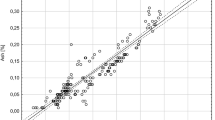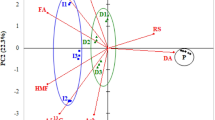Abstract
Sixty honey samples from six different production zones of the provinces of Salamanca, Zamora and Cáceres (west Spain) were analyzed for 13 common legal physico-chemical parameters and 17 sugars in order to test for their geographical classification. Application of linear stepwise discriminant analysis to a number of variables made of a selection of analytical results and simple mathematical functions of them allowed, firstly, discrimination between honeys from these six zones and, secondly, discrimination between honeys from the three zones of the province of Salamanca. The eight most discriminant variables selected for the six zones were a combination of nine physico-chemical parameters and sugars, with 85.00% of correctly classified samples; for the three zones of the province of Salamanca, regarded with special interest in our study, seven variables were selected (consisting of seven single physico-chemical parameters and sugars) with a result of 100.00% of correctly classified samples.
Similar content being viewed by others
Author information
Authors and Affiliations
Additional information
Received: 3 May 1999 / Revised version: 30 July 1999
Rights and permissions
About this article
Cite this article
Gómez Bárez, J., Garcia-Villanova, R., Garcia, S. et al. Geographical discrimination of honeys through the employment of sugar patterns and common chemical quality parameters. Eur Food Res Technol 210, 437–444 (2000). https://doi.org/10.1007/s002170050578
Issue Date:
DOI: https://doi.org/10.1007/s002170050578




